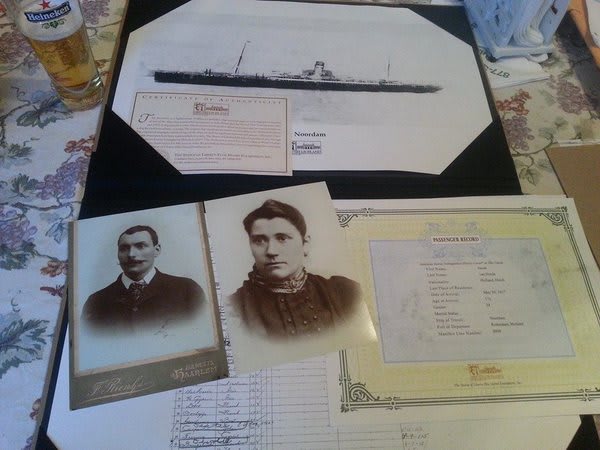Most of us in our lives have been given or have inherited things from family members. Sometimes we want them. Sometimes we don’t. Most of the time we’re ambivalent. The “thing” or “things” may remind us of a great-aunt or grandfather, but reminding comes in all kinds of hues. We also may see the “stuff” as labor-intensive. We need to sort through it. We know we need to label things, to document. We know we need to store things properly. There are archival boxes, acid-free papers, display options. We know we need to keep things insect-free and safe from mold and mildew and in a place safe from extremes of temperature. All that takes time — which we promise we’ll start on the next free weekend, the next holiday, when a family member comes to help–or when retirement comes.
Besides, we think the person who collected all that “stuff”, and who obviously loved it and wanted us to have it, wouldn’t be properly honored if we didn’t keep it.
We know, too, that the number one rule applies: “Do no harm.”
We may have boxes–old boxes–of unsorted “stuff”. It may be very dusty or full of allergens. The photos may not labeled. We don’t know one great-great-uncle from another. Maybe we have our grandmother’s school books, her needlework. Maybe we have fishing gear or old souvenirs from vacations long ago. Maybe there are stacks of postcards, holiday cards, love letters. Maybe there are newspapers from past historic events. Maybe we don’t have room for all this “stuff”. Maybe our wife or husband or children or best buddies really don’t want the stuff in the house. Maybe the stuff is really in the way. Maybe it is really causing problems in life, maybe even causing physical distress.
Most of us have seen episodes of “Hoarders” where a person just can’t rid themselves of inherited “things”. At the same time they don’t take care of the “stuff”. It’s not clean; it’s not organized. It’s not documenting the past…only a miserable, unhealthy and limiting present.
So, how do we keep up with the past? How to we “keep” without it keeping us? How do we know what to keep and what to let go? How can we avoid the later regret of letting something go that we should have kept?
We were struck by two photos recently shared with us by our readers. They both document important parts of their family’s history. Both reflect work done to document and preserve. We’d like to thank Stephen and Ricky for sharing them with us.

Old photos can instill a yearning to find out more about our ancestors lives. That leads us to finding out more about history. We learn about ourselves in the process and what we may want to become. At Dusty we, of course, strongly advocate the researching of old family photos and keeping as many as possible. Family get-togethers are a great time to do it…especially if you have a scanner and lots of people can help with the process. They can be scanned digitally and then stored in archival paper, or even envelops, and stored in an archival box. Scanned copies can be used in scrapbooks.
It’s important to note the contributions, too, of the family “curator” who will probably emerge. Stephen has done this. And it’s important for the curator to share his or her findings. Children, especially, can really be influenced by seeing a photo of an ancestor whose life was inspirational…or maybe who was just well-dressed.

We were impressed by how Ricky has collected several documents, plus the photos, of his ancestors. It is organized and well-presented. It helps tell their stories.
For those among us who are faced with boxes of family “stuff” there are many resources out there to help. The Smithsonian, for example, has an excellent book calledSaving Stuff by Don Williams and Louisa Jagger. It’s an easy to read guide on how to care for “collectables, heirlooms and prized possessions”. There are other guides on how to organize and archive and even on how to eliminate clutter.
It all starts with a plan. And plans always start with goals. What do you want to do with the “stuff”? Do you want organize it, distribute to other family members, donate it to a museum, sell it, or just hold on to it for someone else? Those answers come first. Keeping up with the past always involves the future.
SKM: below-content placeholderWhizzco for DOT

